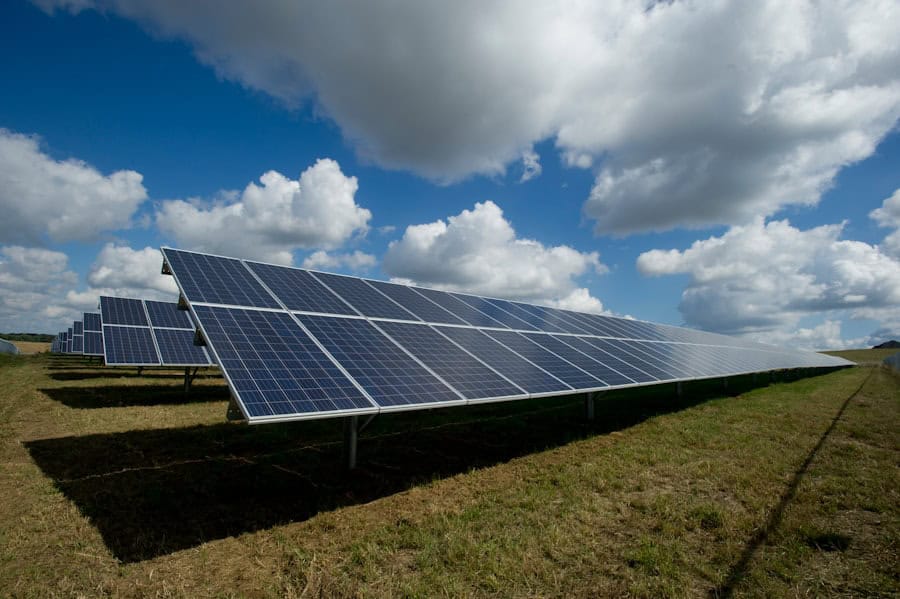The advent of autonomous vehicles represents a significant leap in transportation technology, promising to revolutionize how we navigate our cities and interact with our environment. These self-driving cars, equipped with advanced sensors, artificial intelligence, and machine learning algorithms, are designed to operate without human intervention. As the automotive industry shifts towards automation, there is an increasing recognition of the need for sustainable energy sources to power these vehicles.
The integration of renewable energy into the autonomous vehicle ecosystem not only addresses environmental concerns but also enhances the overall efficiency and sustainability of transportation systems. Renewable energy sources, such as solar, wind, and hydroelectric power, offer a compelling alternative to traditional fossil fuels. The synergy between autonomous vehicles and renewable energy can lead to a more sustainable future, reducing greenhouse gas emissions and dependence on non-renewable resources.
As cities become more congested and pollution levels rise, the urgency for cleaner transportation solutions becomes paramount. By harnessing renewable energy, autonomous vehicles can contribute to a cleaner environment while maintaining the convenience and efficiency that modern society demands.
Key Takeaways
- Autonomous vehicles and renewable energy are shaping the future of transportation.
- Using renewable energy for autonomous vehicles can reduce greenhouse gas emissions and reliance on fossil fuels.
- Challenges of implementing renewable energy in autonomous vehicles include infrastructure, cost, and energy storage.
- Current technologies and innovations in renewable energy for autonomous vehicles include solar panels, regenerative braking, and advanced battery technologies.
- Renewable energy has the potential to revolutionize the autonomous vehicle industry by making transportation more sustainable and efficient.
The Benefits of Using Renewable Energy for Autonomous Vehicles
Reduced Operational Costs
One of the most significant advantages is the reduction in operational costs. Electric vehicles (EVs), which are often the platform for autonomous technology, have lower fuel costs compared to gasoline or diesel-powered vehicles. When these EVs are charged using renewable energy sources, such as solar or wind power, the cost savings can be substantial. For instance, a study by the National Renewable Energy Laboratory (NREL) found that charging an electric vehicle with solar energy can reduce fuel costs by up to 80% compared to conventional fuels.
Enhanced Reliability and Resilience
Moreover, renewable energy can enhance the reliability and resilience of transportation systems. By decentralizing energy production through local solar panels or wind turbines, communities can reduce their reliance on centralized power grids that may be vulnerable to outages or disruptions. This decentralized approach not only ensures a more stable energy supply for autonomous vehicles but also promotes energy independence.
Energy Independence and Disaster Resilience
In regions prone to natural disasters or extreme weather events, having a local renewable energy source can be crucial for maintaining transportation services when traditional power sources fail. This approach can ensure that autonomous vehicles continue to operate, providing essential services to communities in need.
Challenges of Implementing Renewable Energy in Autonomous Vehicles

Despite the clear benefits of integrating renewable energy into the autonomous vehicle sector, several challenges must be addressed to realize this vision fully. One of the primary obstacles is the current limitations in battery technology. While advancements have been made in battery efficiency and capacity, the energy density of batteries still lags behind that of fossil fuels.
This limitation affects the range and performance of electric autonomous vehicles, making it essential to develop more efficient energy storage solutions that can support longer journeys without frequent recharging. Another significant challenge lies in the infrastructure required to support renewable energy charging stations for autonomous vehicles. The widespread adoption of electric and autonomous vehicles necessitates a robust network of charging facilities powered by renewable sources.
However, many regions still lack adequate charging infrastructure, particularly in rural or underserved areas. The transition to renewable energy also requires substantial investment in grid upgrades and smart grid technologies to manage the variable nature of renewable energy generation effectively. Without addressing these infrastructure challenges, the potential benefits of renewable energy for autonomous vehicles may remain unrealized.
Current Technologies and Innovations in Renewable Energy for Autonomous Vehicles
The intersection of renewable energy and autonomous vehicle technology has spurred a wave of innovation aimed at overcoming existing challenges and enhancing sustainability. One notable advancement is the development of solar-powered electric vehicles. Companies like Lightyear are pioneering vehicles equipped with integrated solar panels that can harness sunlight to extend driving range and reduce reliance on charging stations.
This innovation not only enhances the vehicle’s efficiency but also aligns with the principles of sustainability by utilizing a clean energy source directly. In addition to solar technology, advancements in wireless charging systems are also gaining traction. These systems allow electric vehicles to charge while in motion or parked without the need for physical connections.
For instance, companies like WiTricity are developing resonant magnetic induction technology that enables efficient power transfer over short distances. This innovation could facilitate the integration of renewable energy into urban environments by allowing vehicles to charge at designated locations equipped with renewable energy sources, such as solar panels or wind turbines.
The Potential Impact of Renewable Energy on the Autonomous Vehicle Industry
The integration of renewable energy into the autonomous vehicle industry has the potential to reshape not only how we think about transportation but also how we approach urban planning and infrastructure development. As cities increasingly adopt smart technologies and prioritize sustainability, the demand for electric and autonomous vehicles powered by renewable sources will likely grow. This shift could lead to a significant reduction in urban air pollution and greenhouse gas emissions, contributing to healthier living environments.
Furthermore, the combination of autonomous vehicles and renewable energy could facilitate new business models within the transportation sector. For example, ride-sharing services utilizing electric autonomous vehicles could operate more efficiently when powered by renewable energy sources. This model could reduce operational costs while providing affordable transportation options for consumers.
Additionally, as more companies invest in renewable energy infrastructure, job creation in both sectors could lead to economic growth and innovation.
Government Policies and Regulations Supporting the Integration of Renewable Energy in Autonomous Vehicles

Government policies play a crucial role in fostering the integration of renewable energy into the autonomous vehicle landscape. Many countries are implementing incentives and regulations aimed at promoting electric vehicle adoption and supporting renewable energy initiatives. For instance, tax credits for electric vehicle purchases, grants for charging infrastructure development, and mandates for renewable energy usage are becoming increasingly common.
In addition to financial incentives, regulatory frameworks are being established to ensure that autonomous vehicles meet safety standards while promoting sustainability. The U.S. Department of Transportation has initiated programs that encourage research and development in both autonomous vehicle technology and renewable energy solutions.
By creating a supportive regulatory environment, governments can stimulate innovation and investment in these sectors, ultimately accelerating the transition towards a more sustainable transportation future.
Future Outlook for Renewable Energy-Powered Autonomous Vehicles
Looking ahead, the future of renewable energy-powered autonomous vehicles appears promising as technological advancements continue to unfold. The ongoing research into battery technology is expected to yield breakthroughs that enhance energy density and charging speeds, making electric vehicles more viable for long-distance travel. Additionally, as smart grid technologies evolve, they will enable better integration of renewable energy sources into transportation networks.
Moreover, public awareness and acceptance of both autonomous vehicles and renewable energy are on the rise.
This shift in consumer behavior is likely to drive further investment in electric autonomous vehicles powered by renewable sources.
The collaboration between automotive manufacturers, technology companies, and renewable energy providers will be essential in shaping this future landscape. By working together to develop innovative solutions that address existing challenges, stakeholders can create a seamless ecosystem where autonomous vehicles operate efficiently while being powered by clean energy.
The Role of Renewable Energy in Shaping the Future of Autonomous Vehicles
The convergence of autonomous vehicle technology and renewable energy presents an unprecedented opportunity to redefine transportation systems globally.
As we navigate the complexities of this transition, it is imperative that stakeholders across industries collaborate to overcome challenges and capitalize on emerging technologies.
The role of government policies cannot be understated; they will serve as catalysts for innovation and investment in this sector. As we look toward a future where autonomous vehicles powered by renewable energy become commonplace, it is clear that this integration will play a pivotal role in shaping sustainable urban environments and improving quality of life for generations to come.
An interesting related article to The Role of Renewable Energy in Powering Autonomous Vehicles is Exploring the Features of the Samsung Galaxy Book Odyssey. This article delves into the innovative features of the Samsung Galaxy Book Odyssey, highlighting its powerful performance and cutting-edge design. Just as renewable energy is revolutionizing the way we power vehicles, the Samsung Galaxy Book Odyssey is pushing the boundaries of technology and design in the world of laptops. Both articles showcase the exciting advancements being made in the fields of renewable energy and technology.
FAQs
What is the role of renewable energy in powering autonomous vehicles?
Renewable energy plays a crucial role in powering autonomous vehicles as it provides a sustainable and environmentally friendly source of power for their operation.
How is renewable energy integrated into autonomous vehicles?
Renewable energy can be integrated into autonomous vehicles through the use of technologies such as solar panels, wind turbines, and regenerative braking systems to capture and store energy from natural sources.
What are the benefits of using renewable energy to power autonomous vehicles?
Using renewable energy to power autonomous vehicles reduces their carbon footprint, decreases reliance on fossil fuels, and contributes to a cleaner and more sustainable transportation system.
Are there any challenges associated with using renewable energy to power autonomous vehicles?
Challenges include the intermittency of renewable energy sources, the need for efficient energy storage solutions, and the initial cost of implementing renewable energy technologies in autonomous vehicles.
How can the use of renewable energy in autonomous vehicles contribute to a greener future?
By reducing greenhouse gas emissions and promoting the use of clean energy, the integration of renewable energy in autonomous vehicles can contribute to a greener and more sustainable future for transportation.

